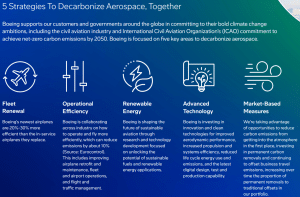Will the Nickel Oversupply Continue to Crush Prices in 2025?
The global nickel market started 2025 with an oversupply dilemma. According to the International Nickel Study Group (INSG), the market is expected to face a supply surplus of 198,000 metric tons (mt) this year. That’s higher than the surplus of 179,000 mt recorded in 2024 and 170,000 mt in 2023.
INSG also predicted that production of primary nickel is projected to reach 3.735 million mt in 2025, while global usage is forecast at just 3.537 million mt. This imbalance continues to weigh down prices and investor sentiment, especially across Asia.

In China, the share of NMC batteries dropped to 19% of total production in January and February 2025, according to the China Automotive Battery Innovation Alliance. This shift has put downward pressure on nickel sulfate prices, despite expectations of higher consumption in 2025.
- S&P Global highlighted that global nickel demand from batteries was around 384,000 mt Ni in 2024 and is forecast to grow to 543,000 mt Ni in 2025.
Yet, the market remains underutilized due to excess production capacity and preference for alternative battery chemistries. Thus, on the demand side, the market remains sluggish.
2025 Chinese NMC Production Further Declines to 19%

Oversupply Weighs on Nickel Prices Despite Early-Year Momentum
Nickel prices showed a brief uptick at the start of 2025, but the momentum quickly faded due to ongoing supply pressure and sluggish demand. Prices opened the year at $15,040 per metric ton on January 2, rising to $16,080 mid-month before dipping again.
As per S&P Global,
- The LME 3M closing nickel price dropped to a near-five-year low of $14,084/t on April 9 from $16,107/t on April 1.
- By the end of Q1, prices had settled around $15,545/t.
What happened to the nickel price in Q1?

However, on April 15, the U.S. government began a probe into imports of processed critical minerals like nickel under Section 232 of the Trade Expansion Act. The Commerce Secretary must submit a report to the President within 180 days.
Trump earlier used Section 232 to impose 25% tariffs on steel and aluminum. Refined Class 1 nickel was not hit by the April 2 tariffs, but that might change after the new review.
A recent copper probe caused copper stocks to shift to the U.S., pushing up prices on the London Metal Exchange (LME). If the same happens, nickel stocks might drop, and nickel prices could also rise soon.
Asia’s Nickel Market Strain in Q1
Indonesia and China are making more value-added nickel products like nickel sulfate and nickel cathodes. These are used in electric vehicles (EVs) and batteries.
Thus, Asia continues to lead global nickel supply growth.
- Indonesia is set to boost its production from 1.6 million metric tons in 2024 to 1.7 million metric tons in 2025, keeping its spot as the world’s top producer.
- China comes next, with output rising from 1.035 million metric tons in 2024 to 1.085 million metric tons in 2025.
- The Philippines shipped 54 million metric tons of nickel ore in 2024, with 43.5 million metric tons going to China.
However, the Indonesian government is delaying permits (RKABs), making the supply of nickel ore significantly tight. Yet, the country still produces a large amount of refined nickel.
Furthermore, Manila is now considering a ban on raw nickel exports. If that happens, China’s nickel supply chain could take a major hit.

- RELATED: Philippines’ Nickel Export Ban and U.S. Tariffs: What’s Happening in the Nickel Market Now?
Jason Sappor, metals and mining research senior analyst at S&P Global Commodity Insights, has revealed his insights by noting,
“Amid an unstable global macroeconomic backdrop, we expect the global primary nickel market to remain oversupplied in 2025, with production from Indonesia forecast to expand further this year, despite challenges like tight nickel ore availability and a potential royalty rate hike on nickel products by the government.”
Feb 2025 China Nickel Ore Imports Down 6.3% y-o-y

Tax Hike and Shrinking Profits
Indonesia recently raised mining royalties from 10% to as high as 19%, based on nickel prices. These new rates aim to fund government programs under President Prabowo Subianto. Still, low-grade nickel used for EV batteries will see a lower 2% royalty.
These tax hikes have pushed production costs higher and caused nickel prices to rise in March. But the future remains uncertain. Miners warn of shrinking profits due to rising expenses and limited ore supply.
Meanwhile, Chinese companies are pulling back. Nickel giant CNGR has paused its South Korea project, showing investors are growing cautious in a volatile nickel market.
Conclusion: Surplus to Persist, Prices Likely to Stay Low
Looking ahead, the nickel market is expected to remain oversupplied throughout 2025. INSG forecasts a 3.8% increase in global nickel production this year, after a 4.6% rise in 2024.
Lastly, as we can see, policy-driven price volatility due to new royalties, trade tariffs, and battery chemistry shifts will continue to keep nickel prices low.
- FURTHER READING: Nickel’s Wild Ride: What’s Driving Prices and Future Demand?
The post Will the Nickel Oversupply Continue to Crush Prices in 2025? appeared first on Carbon Credits.


































